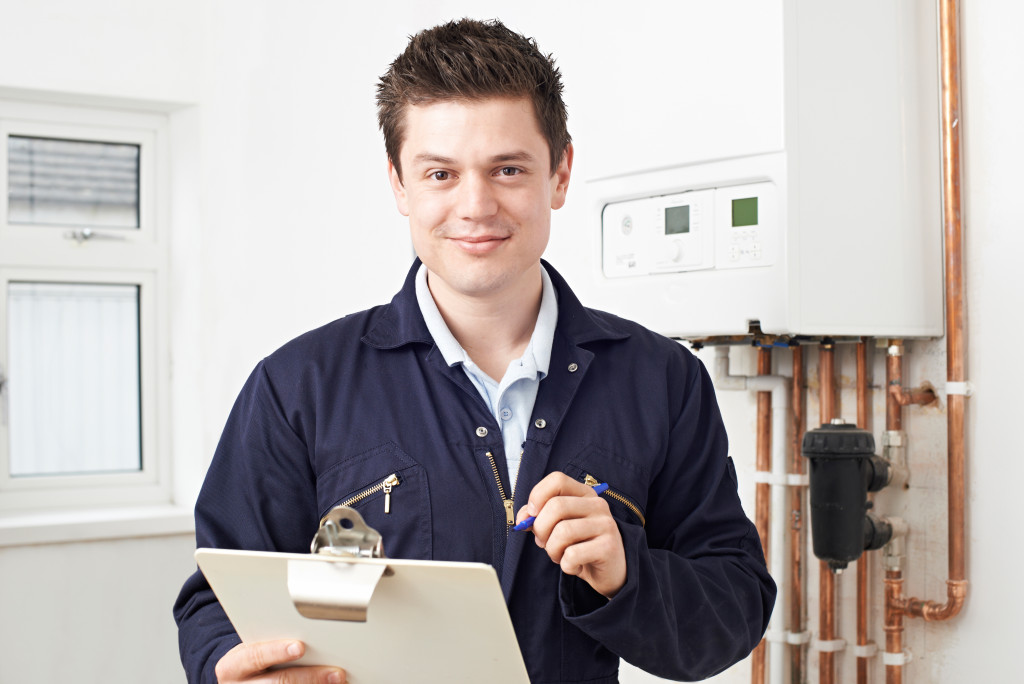You’ve just closed on your very first home. Congrats! But before you start unpacking and planning your housewarming party, there are a few things you need to do to make sure that your new home is safe for your family. From checking for asbestos to ensuring that your carbon monoxide detectors are up to date, here’s a quick run-down of the most critical safety checks every new homeowner should make.
Check for Asbestos
Asbestos is a naturally occurring fibrous material that was once widely used in construction and insulation due to its high resistance to heat, fire, and chemicals. However, asbestos fibers can become airborne and breathed in, leading to several serious health problems, including lung cancer, mesothelioma, and asbestosis. If your home was built before the mid-1980s, it might contain asbestos-containing materials (ACMs), and it’s essential to have these materials inspected by a qualified professional if you’re planning any renovations. While ATMs are not necessarily dangerous if left undisturbed, there is a risk of exposure if they become damaged or disturbed. If you do have ACMs in your home, make sure to have them removed by a trained and certified asbestos abatement contractor.
Inspect Your Home’s Electrical System

Faulty electrical wiring is one of the leading causes of house fires. So, before you start using all those appliances you registered for, take some time to inspect your home’s electrical system. Look for any exposed wires or frayed insulation and have them repaired by a professional as soon as possible. You should also install ground-fault circuit interrupters (GFCIs) in all wet areas of your home, such as the kitchen and bathroom. GFCIs will help prevent electrical shocks by shutting off power when they sense current leakage.
Another way to do this is to call a thermal imaging company. Thermal imaging can help identify potential electrical problems, such as overloaded circuits or damaged wiring. This can help you take steps to fix any issues before they become serious safety hazards. Remember, it’s always better to be safe than sorry when it comes to electrical safety.
Update Your Carbon Monoxide Detectors
Carbon monoxide is an invisible, odorless gas that can be deadly if inhaled in high concentrations. Unfortunately, carbon monoxide poisoning is too common, especially in winter when homes are sealed up tight against the cold. That’s why it’s essential to have working carbon monoxide detectors in your home. These devices can save your life by alerting you to the presence of carbon monoxide before it reaches dangerous levels.
But like any other type of safety equipment, carbon monoxide detectors must be regularly maintained and updated. Most sensors only last about five years, so checking the expiration date and replacing them as needed is essential. You should also test your detectors monthly to ensure they are working correctly. By taking these simple precautions, you can help keep your family safe from the dangers of carbon monoxide poisoning.
Test Your Smoke Alarms
It’s essential to test your smoke alarms regularly to make sure they’re working correctly. You should also update them as needed to ensure they provide the best protection for your home. Here are a few things to keep in mind when it comes to updating your smoke alarms:
- Check the manufacturer’s recommendations. They’ll be able to tell you how often you need to update your smoke alarms and what type of batteries you should use.
- Consider your needs. You may need more than one smoke alarm if you have a large home or family. Or, if you live in an area prone to power outages, you might want to invest in a battery-operated smoke alarm.
- Make sure you install your smoke alarms correctly. Follow the manufacturer’s instructions, and place them strategically throughout your home. Taking these steps can help ensure that your smoke alarms are always up to date and ready to protect your family in an emergency.
Check Your Home’s Foundation
The foundation of your house is one of the most critical structural components. It keeps your home from shifting, settling, and experiencing other issues that can lead to expensive repairs. That’s why it’s essential to check your foundation for any cracks or further damage periodically. If you see any cracks, no matter how small, it’s essential to have a professional evaluate the situation and determine if repairs are needed.
In some cases, cracks can be repaired with a simple filling material. However, more severe damage may require extensive repairs or even replacement. By periodically checking your home’s foundation and addressing any damage quickly, you can help ensure that your house remains safe and structurally sound for years to come.
The bottom line
Purchasing a new home is an exciting milestone—but it’s also a big responsibility. Before you start unpacking boxes and planning your housewarming party, take some time to ensure that your new home is safe for you and your family. From checking for asbestos to inspecting the foundation for cracks, following these simple tips will help give you peace of mind knowing that your home is safe and sound.




